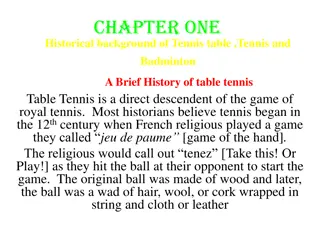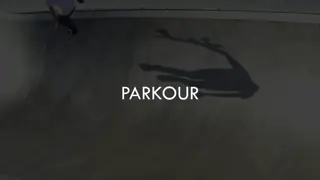The Evolution of Javelins: From Ancient Warfare to Modern Sport
Javelins have a rich history dating back to prehistoric times, with evidence of their use by various cultures for hunting and warfare. African tribes and Norse men were known users of javelins, each with their own unique methods and purposes. Over time, javelins evolved from weapons of war to become a popular sport requiring skill and precision in throwing techniques. Today, javelin throwing is a competitive sport where athletes aim to throw a metal-tipped javelin as far as possible using specific guidelines. Despite facing obsolescence in the Middle Ages, the javelin remains a symbol of ancient prowess and a thrilling athletic pursuit.
Download Presentation

Please find below an Image/Link to download the presentation.
The content on the website is provided AS IS for your information and personal use only. It may not be sold, licensed, or shared on other websites without obtaining consent from the author. Download presentation by click this link. If you encounter any issues during the download, it is possible that the publisher has removed the file from their server.
E N D
Presentation Transcript
Javelining Javelining
JEVELIN JEVELIN A javelin is a light spear designed primarily to be thrown, historically as a ranged weapon, but today just for sport. The javelin is almost always thrown by hand, unlike the bow and arrow and slingshot, which shoot projectiles from a mechanism. However, devices do exist to assist the javelin thrower in achieving greater distance, generally called spear- throwers. A warrior or soldier armed primarily with one or more javelins is a javelineer
Prehistory Prehistory There is archaeological evidence that javelins were already in use. Seven spear-like objects were found in a coal mine in Germany. The weapons are about 400,000 years old.The items were made of spruse trunk and were between 1.83 and 2.25 metres long. They were manufactured with the maximum thickness and weight situated at the front end of the wooden shaft.
African jevelineers Many African tribes have used the javelin as their main weapon since ancient times. Typical African warfare was based on ritualized stand-off encounters involving throwing javelins without advancing for close combat. In the flag of Swaziland there is a shield and two javelins, which symbolize the protection from the country's enemies.
The downfall of the jevelin The javelin began to become obsolete during the Late Middle Ages for many reasons. As cavalry and heavy armor became common, the medium range weapon niche was filled by the crossbow as an alternative. Pikes and crossbows did not completely outperform javelins, but many years of training was just not worth the time.
Norse men Norse men This is some archeological evidence that the Norse were familiar with and used the javelin for hunting and warfare, but they commonly used a spear designed for both throwing and thrusting. The Old Norse word for javelin was frakka.
How the sport today works Using one arm, a metal-tipped javelin is thrown as far as possible. The athlete must hold the javelin by its corded grip with his or her little finger closest to the tip of the implement. The men s javelin must weigh at least 800g and be 2.6m-2.7m long while the women s javelin must weigh 600g and be 2.2m-2.3m long.
Training part Start your javelin training session with 30 minutes of warm-up Stretch your muscles for 10 minutes after your warm-up. Lift weights on your strength-training days with as quick a movement as you can manage Train your upper body with plyometric exercises and overhead throws
Throwing Technique Throwing Technique Proper technique requires the athlete to hold the javelin with only one hand on the cord grip. Gloves aren't allowed, and tape on the fingers is permitted only if its to cover an open wound. The rules do, however, allow athletes to chalk their hands.
THANK YOU FOR YOUR ATTENTION MADE BY: THOMAS KOUPANTSIS

















































